Sicilian Eggplant Rolls
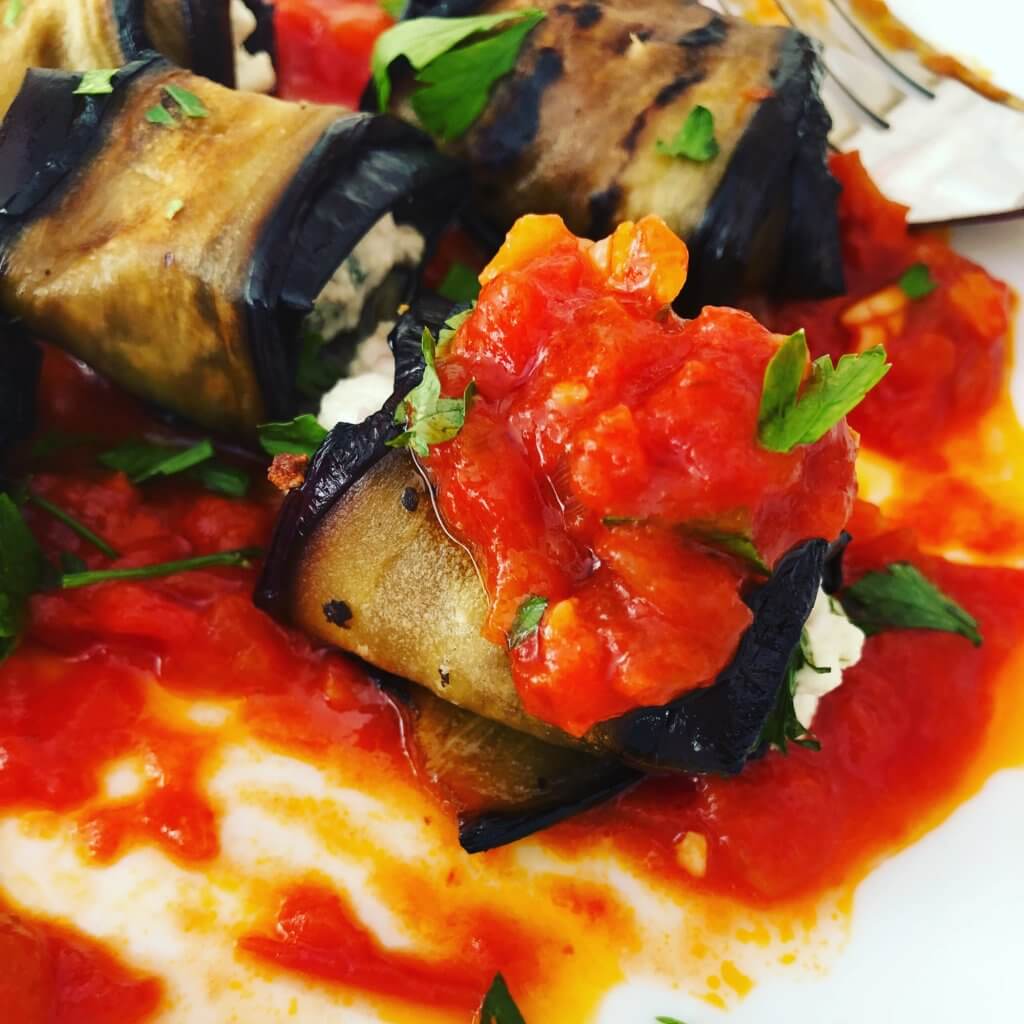
This summer weather in Turkey reminds me exactly of my two summers spent in Sicily in the mid 90’s. Very hot. Very dry. Limited A/C, if any…and the smell of homemade cooking in every neighborhood. Those smells give you a great idea of what to cook, actually. In Italy, there is the smell of all things based on tomatoes; in Turkey it seems to me the smell is more based on red pepper paste, at least here in the southern part of the country where I am now. I visualize what my neighbors are cooking all the time, which is in part what helps me to think up my own menu day after day.
That said, I can never let go of the traditional tastes I grew up with and grew to love even more after visiting Sicily because the food there is that good. At least a few times a week there has to be some sort of pasta on the table and something to do with tomato sauce. Right now eggplants are plentiful so there is no excuse not to consume them, but they do have to be prepared just right to get the bitterness out of them, which can be a deterrent when you’re pressed for time.
I happen to be searching for traditional Sicilian recipes online since all of my cookbooks are still back in Chicago and I found one I just couldn’t stop thinking about until I made it- and then made it again- and again: Sicilian Eggplant Rolls. The flavor is simply delicious, rustic, earthy and so incredibly satisfying. If I was having a party, I would serve this up as an appetizer (although it’s a lot of work for an appetizer, but it really does have some pizazz in presentation).
Here’s how to make them.
First, get fresh, beautiful purple eggplant without any soft spots or wrinkles.
Once you’ve got your prized eggplants, be sure to make the tomato sauce ahead of time. Please don’t wait until the eggplants are cooked to do this- trust me. You will want to eat these as soon as they’re stuffed with the cheese, so do not miss the opportunity to eat these with the delicious tomato sauce- even if it’s all cold- they’re delish!
To make the tomato sauce, I use an unseasoned tomato puree that comes in a jar and then add minced garlic, basil, salt and a wee bit of sugar. Yes, sugar- to take out the acidity or bitterness of the tomatoes. It’s basically the only time I ever totally approve of using sugar in my cooking, but that’s just me. Use organic turbinado sugar, if possible.
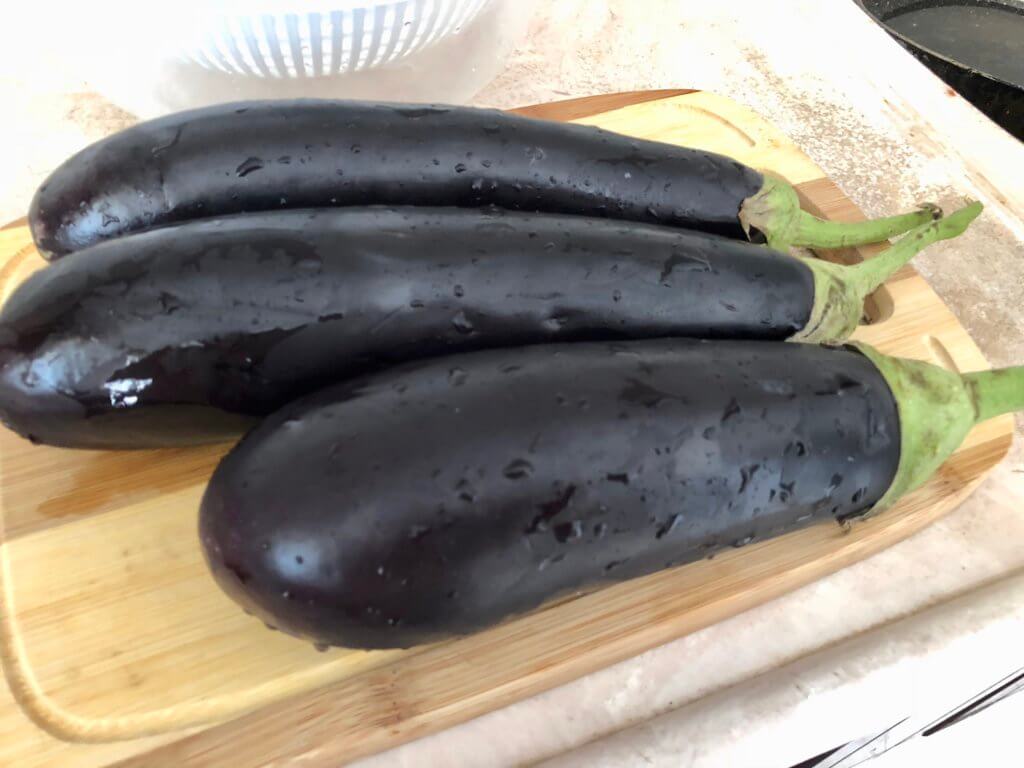 Take the tops off and cut each lengthwise thinly, which may take a while if you’re using a knife. You can also use a mandolin for this (watch your fingers). You can’t use a food processor because you’d have to cut the eggplant in half and the pieces would be too short.
Take the tops off and cut each lengthwise thinly, which may take a while if you’re using a knife. You can also use a mandolin for this (watch your fingers). You can’t use a food processor because you’d have to cut the eggplant in half and the pieces would be too short.
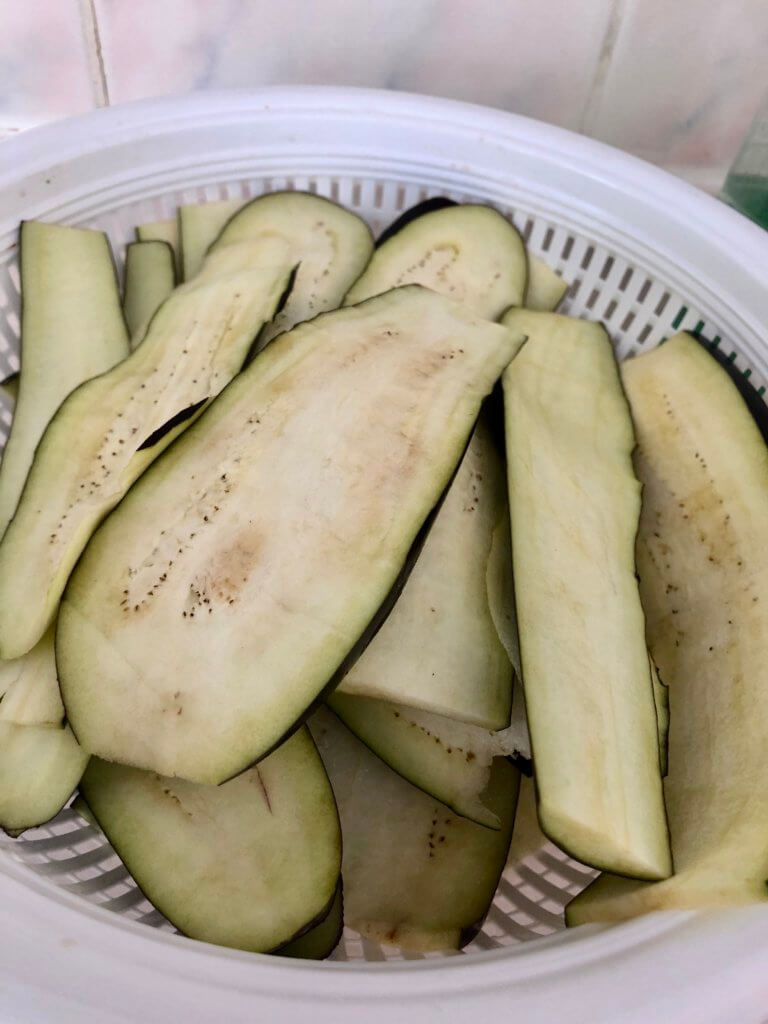
Now comes the thing you have to do to take the bitterness out of the eggplant. Please don’t skip this step because if you do and the eggplant is bitter, it really ruins the whole dish. To my knowledge, there is no way to really know how/if the eggplant is bitter prior to cooking and eating it. If you or someone you know has this information, please share it with me in the comments!
So the way to do this is to place the eggplant pieces in a colander and sprinkle them very generously with salt. Don’t worry- you’re not going to eat all that salt later. Move the pieces around with your hands to make sure all pieces are getting salted. Put a plate on top and a pitcher of water or something heavy on top of the plate to weigh them all down firmly. What is not shown in this photo is that you should have something underneath the colander because juices from the eggplant will come out of the bottom. I probably did that after I took the picture.
*By the way, my aunt in Sicily taught me this method over 20 years ago so she deserves the credit for teaching me this, which is now more of a well-known fact but that was way before anyone ever seemed to want to cook for themselves, and before cooking became trendy again- she was on to something.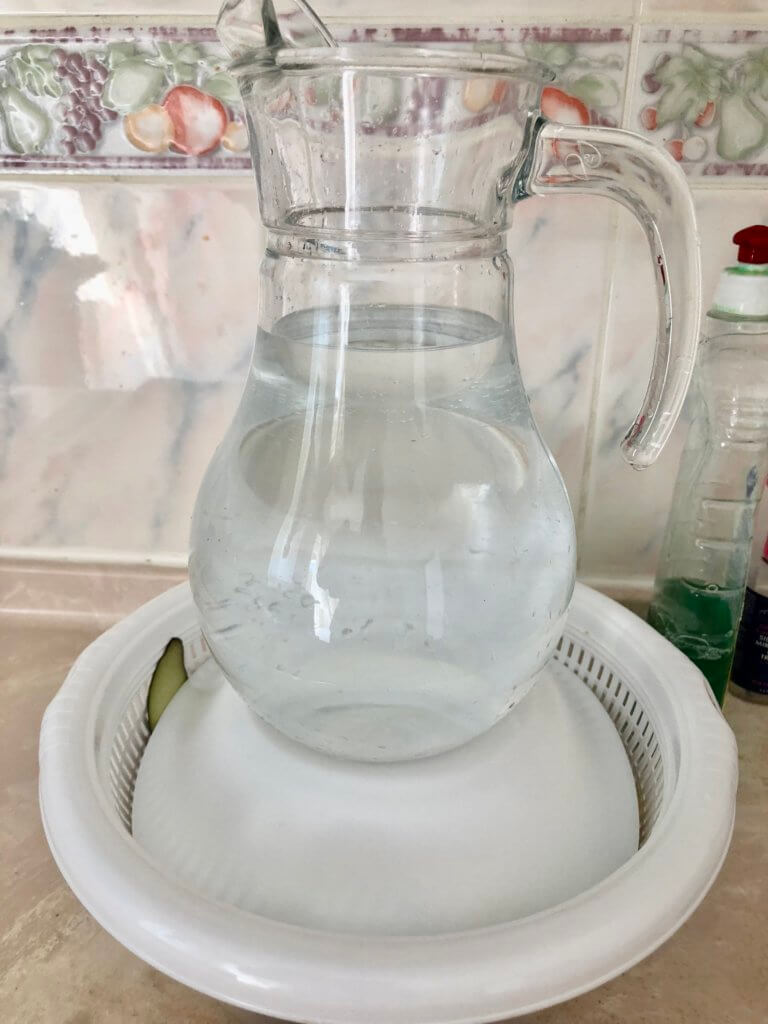
You need to let the weighing down happen for at least 30 minutes. Sometimes I let it go way longer, but depending on the amount of eggplant that should be enough time for the three I cut for this recipe. Once the time is up, you’ll see that the eggplant pieces have ‘sweat’ out some water (i.e. bitter flavor) and you must dry them all up with a paper towel or cotton towel, to be more eco-friendly. This is a very important step, otherwise oil will be spewing at you when you cook them, PLUS what would have been the point of doing all that sweating if it isn’t wiped off?
Cooking chemistry makes so much sense when you think about it….
So, while you’re waiting for the eggplant sweating to happen, you can make your cheese mixture. This is where things got tricky for me because the original recipe calls for using ricotta cheese (for which I have a homemade recipe in the My Halal Kitchen cookbook, if you didn’t already know). In my world, things have changed a bit and the type of food ingredients I used to get aren’t as inexpensive or as easily accessible as they were in the U.S. when every local Trader Joe’s store had what I wanted and if they didn’t, someone else did (although usually of a lesser quality). Here in Turkey, things like Parmesan and ricotta cheeses are considered foreign, as they are imported and are a bit more expensive than locally made products. You can often find close equivalents, too, for both, which I have.
In this case, I used something called Suzme Peynir. Suzme means “strained” (i.e. thicker) and the word is used for yogurt as well as cheeses; and peynir means “cheese” and refers to all kinds of cheeses. There are several brands of suzme peynir available in all grocery stores and it’s favored because it’s soft, thick and goes well with anything you put on the table for the famed Turkish breakfast (kahvalti). I often use it as a topping for stewed vegetables and even pasta because it’s so nice and creamy. That also makes it the perfect candidate for a ricotta substitute- so then it hit me to use it in this dish.
Whether using ricotta or suzme peynir, add chopped parsley, salt and pepper to taste. Set aside (refrigerated) until ready to add to the eggplants.
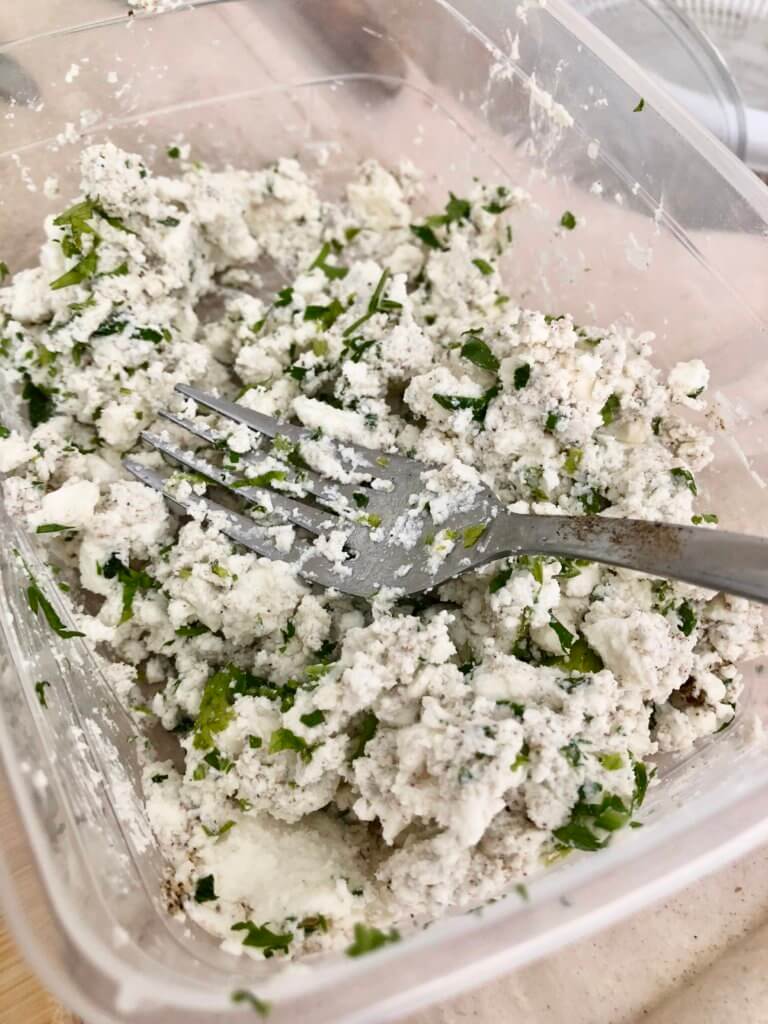
Once the eggplants have finished sweating and are ready to saute, be very sure they are dry, piece by piece. Use a pastry brush or silicone brush to swipe each side of each piece of eggplant with the olive oil (that’s what the 1 cup is for). Do this instead of adding oil to the pan and frying. It’s less messy and they cook and brown more easily this way.
Once they’re doing being swiped with oil, heat the saute pan and proceed to brown each piece on each side. Set the finished pieces aside on a paper towel-lined plate to drain out any excess oil.
Once finished cooking all the pieces, they’re ready to be stuffed. Place each eggplant piece round side towards you and put a dollop of the cheese mixture on the end.
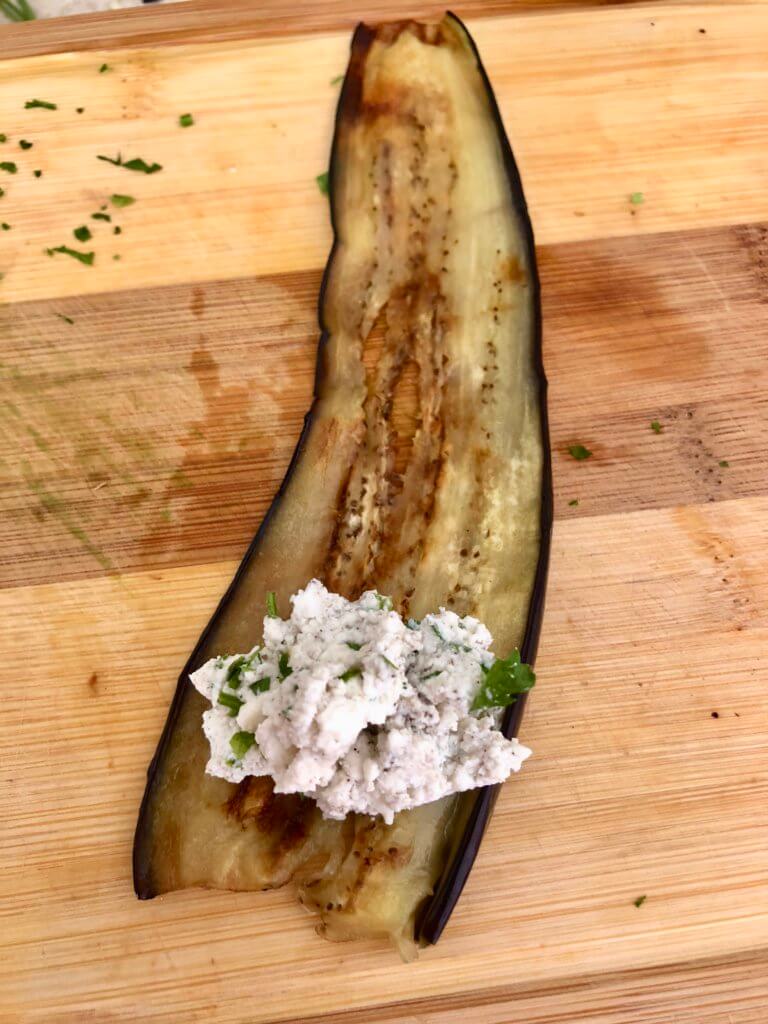
Roll up and away from you.
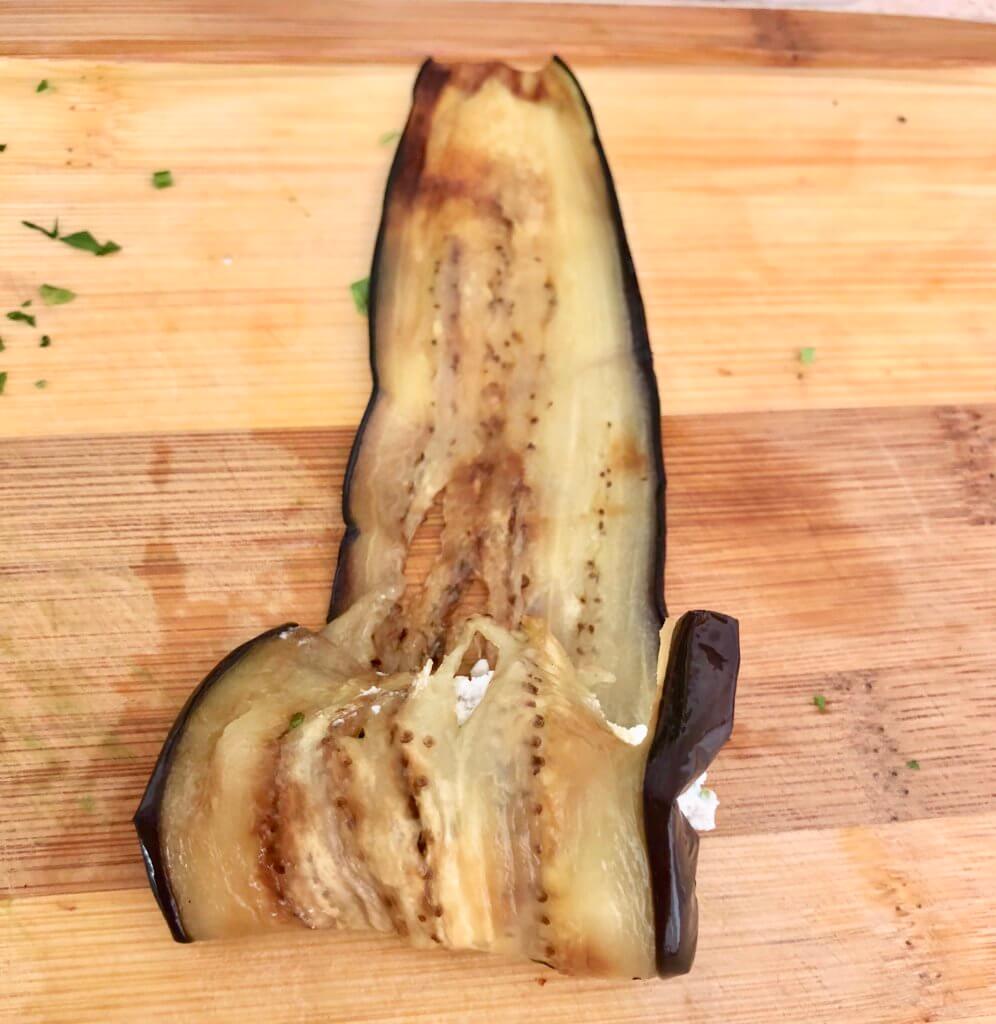
Roll until you can’t roll anymore, making sure they’re nice and tight. Use toothpicks to hold them in place.
If you don’t want to bake these, you can prepare your serving dish by pouring some of the finished tomato sauce (hot or room temperature or even cold) on the bottom of the serving dish, and place each roll on the plate.
If you plan on baking these, place each one (without the toothpick) on a baking pan or sheet and cook for 20 minutes at 300 degrees F. 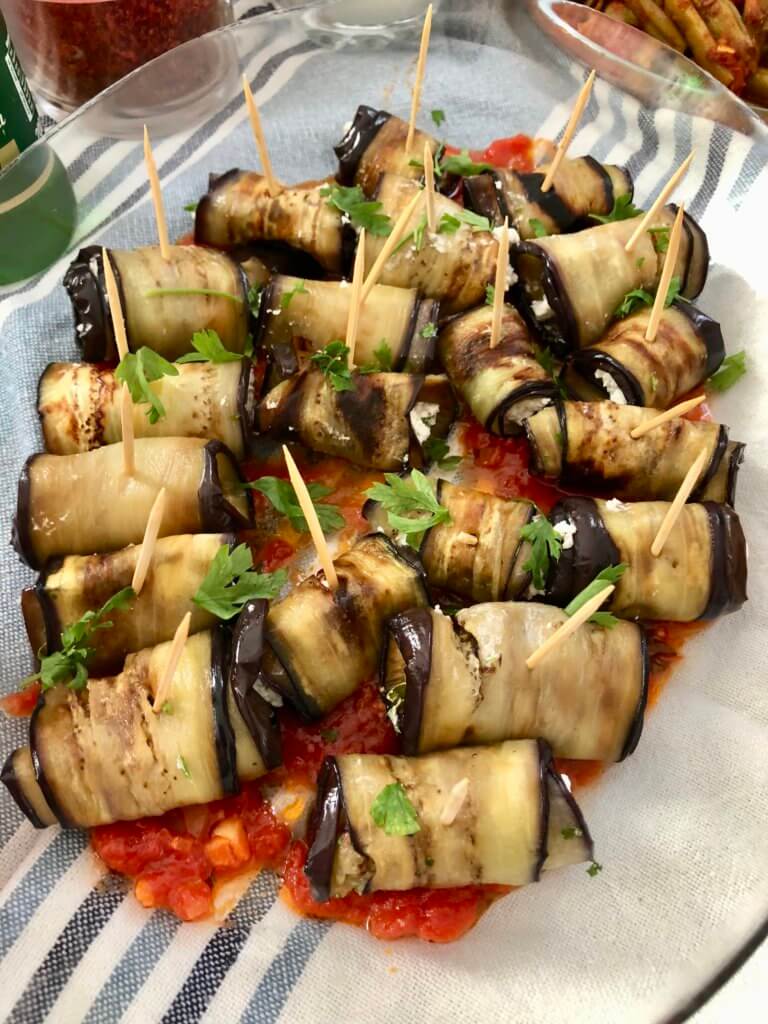
These really are delicious hot or cold and I’ve had them both ways, sometimes straight out of the fridge because they’re that tempting. I do prefer baking them first because it really does set the cheese, but you don’t have to do that if time doesn’t allow or you simply prefer it that way. It is versatile enough. 
Bismillah and Buon Appetito!


- Prepared tomato sauce with garlic, basil and herbs (homemade or store-bought)
- 1-3 large eggplants with the skin
- Salt for eggplant preparation
- 1 cup olive oil + more, as necessary for cooking
- 2 cups ricotta or suzme peynir soft cheese
- 1 teaspoon sea salt
- 1 teaspoon ground black pepper
- 1 tablespoon fresh flat leaf parsley, chopped
- -Silicone pastry brush
- -Non-stick pan
- -Toothpicks
- The tomato sauce should be prepared ahead of time for this dish because once the eggplant starts to cook, there isn’t any time left for making the sauce.
- Prepare the eggplant and remove any bitterness and liquids: Cut the eggplant thinly and place them in a colander/strainer. Salt them generously. Put the colander in a bowl or larger deep dish underneath it. Put a plate that covers the eggplant on top of all the pieces. Place something heavy like a large pitcher of water on top of the plate. Let the liquids come out of the colander, leaving it this way for about 30 minutes to two hours.
- Meanwhile, prepare the cheese mixture whether using the ricotta or the suzme peynir soft cheese. To a medium size bowl, add salt, pepper, and parsley.
- Once finished, remove the eggplant onto a cotton towel and firmly pat down each piece to be sure they are all dry.
- Brush each piece of eggplant with olive oil, front and back.
- Prepare the saute pan for cooking by heating it gently. Place as many pieces of eggplant into the pan as you can fit. Turn the heat up to medium-high and let each piece brown on each side. Continue to do this until the entire batch is finished cooking. If at any point more oil is needed, add it one teaspoon at a time. Use a paper cloth lined plate to lay each piece of sautéed eggplant once they’re finished cooking.
- Let the eggplant cool. To roll, start with the fat, rounded side facing you. Take each piece and add a dollop of the cheese mixture and roll the eggplant away from you. Close firmly with a toothpick on top.
- Once all the eggplants have been rolled, you have two options: you can either bake them in the oven or not. I’ve done both and I prefer to have them baked for a bit, then add the tomato sauce to both the bottom of the platter they’re being served on and a little on top of each one.





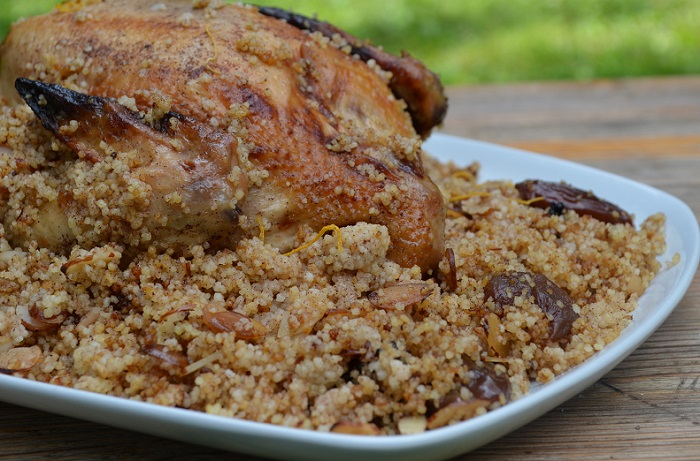


Responses